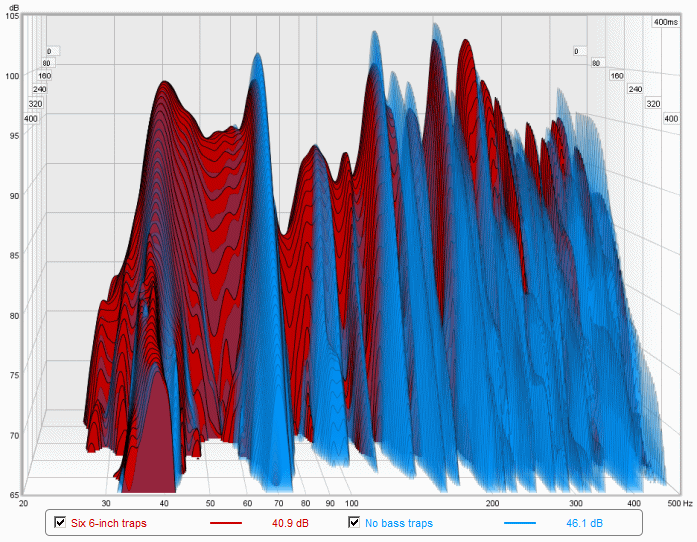Thank you very much for sharing the link. Very interesting read indeed. For those who have little time to read full article, I copied the Conclusion from the article.
In short, any isolation device does not do any sizeable impact on measurement. But speaker placement and room treatment such as bass trap makes much more impact.
By putting isolation device under the speakers change the height of the speakers, which do change on measurement and it might the reason that people claim that there are noticeable hearing difference before and after placing isolation device.
Conclusion
I'm convinced that the measured changes are too small to account for the "obvious" improvements so many people claim to hear after floating their speakers on isolation pads. Most of the response differences are less than 1 or 2 dB, with the biggest differences at the 155 Hz "floor bounce" null frequency due to slightly different heights. An obvious change, to me, is at least a 3 dB response difference over a wide range of frequencies, or a 30 percent change in decay times. It's possible some people have even poorer tables than the one I used, though I doubt it! So why do people swear that adding isolation improved the sound of their loudspeakers? The frequency response varied less than 2 dB for all these products, which I believe is due to different speaker placements. Further, the impulses barely vary, and the waterfalls vary even less. The differences are all 20-30 dB down, so how could this be perceived as a "more-and punchier-low end" as described by Reviews Editor Andy Hong in Tape Op magazine?
One reason the sound can change is because raising the speakers on isolators puts them higher than they had been. As my
Audiophile Beliefs article confirms, moving even a few inches changes the frequency at your ears by a very large amount. You can easily hear this on IsoAcoustics's
Difference Page that plays music through two sets of speakers, where the microphones are in different places for each speaker. So the obvious difference heard is due entirely to the microphone for one speaker being off-axis compared to the other speaker!
Other than the change in frequency response due to different speaker placements, which is real and easily measured, I believe the frailty of human hearing tricks people into thinking the sound improved even though it did not. Call it placebo effect, or wishful thinking, or even a misguided allegiance to a magazine's advertisers rather than its readers. The bass didn't really become "much better controlled" (shorter decay times), nor did the speakers produce "better defined mids, clearer highs," nor did "detail and depth improve significantly" as claimed in the various quotes above. If any of those changes really occurred, they'd be clearly visible in my measurements. They are not.
Simply lowering the loudspeaker three inches changed the response much more than the difference between no isolation and any of the tested devices.
 | Click image for full size. |
| |
Most of the product reviews and user testimonials for loudspeaker isolation products claim they make the bass sound tighter and clearer, less boomy, and better controlled. I've even seen people suggest that speaker decoupling reduces the need for bass traps. For reference, the graph at left shows the bass range response and ringing in a small room with and without six 2x4-foot bass traps. The blue waterfall is the room empty, and the red is after adding the traps. It's easy to see that the response is flatter with bass traps, and all of the modes decay much more quickly. Versus the minimal changes with any of the isolation devices.
So what can we learn from these tests? First, it's clear that moving a loudspeaker even a small amount makes a very real change in the perceived and actual frequency response. So raising your speaker on an isolating stand can change what you hear because of the height difference alone, even if any isolation present had no effect. (It's well known that the correct loudspeaker height puts the tweeter at ear level because that gives the flattest response, so please do that!) But my tests also call into question the hearing acuity of professional recording engineer endorsers, and "golden eared" magazine reviewers, who claimed to hear "obvious" improvements in clarity, bass tightness, and imaging. Either they don't realize the limits of their own hearing, or they all have even worse speaker stands than the flimsy piece of crap table I used!
If anyone reading this believes I missed something, and speaker isolation (or any isolation) makes more difference than my tests show, I urge you to measure the response and ringing for yourself. Then please email me your results, or send me the link where they're posted.



